Brand Growth, Brand Marketing 26 September 2024
Leveraging a brand asset through Powerbranding: When to turn brand stretching into growth fuel
In today's competitive landscape, a 'power brand' must do more to drive sustainable growth. Enter powerbranding—the strategy of stretching a brand into new categories while reinforcing its core identity. This article explores when and how to implement powerbranding strategies, highlighting examples of brands that have successfully navigated this journey.
From power brand to Powerbranding
‘Power brand’ is a term that is often used to describe a brand that is influential, well-recognized, and has a significant impact on its category or industry. We might think of a power brand as having a clear and compelling identity, a dominant position, delivering consistent quality, and creating emotional connections with buyers. In fact, a quick Google search will provide hundreds of aspirational definitions that conflate a power brand with a paragon of branding perfection. This is not helpful. After all, are these positive attributes the symptoms or the drivers of success? We need a more clear and actionable definition that is measurably tied to growth.
Let’s never forget that in CPG, brand growth is an exercise in building penetration. It is a practice of Reach-Recruit-Remind as every brand is consistently losing buyers and needs to replace them. It follows that a more useful definition of a power brand is the ability to unlock additional penetration or, in other words, expand its territory.
In our previous article, we explored how driving category growth directly fuels brand growth. An alternative strategy for a power brand to expand its territory and grow, is to stretch into different categories.
This brings us to powerbranding. At its core, what we mean by powerbranding is unlocking additional penetration by stretching your brand from one category into another. It’s the hallmark of true brand strength. Power brands that succeed in stretching are those that can not only recruit new buyers but also reinforce their presence across a broader range of occasions and consumer needs touching multiple categories. This is where real brand power lies. Here are some examples of successful marketing strategies that employ powerbranding, for your consideration.
Nutella biscuits
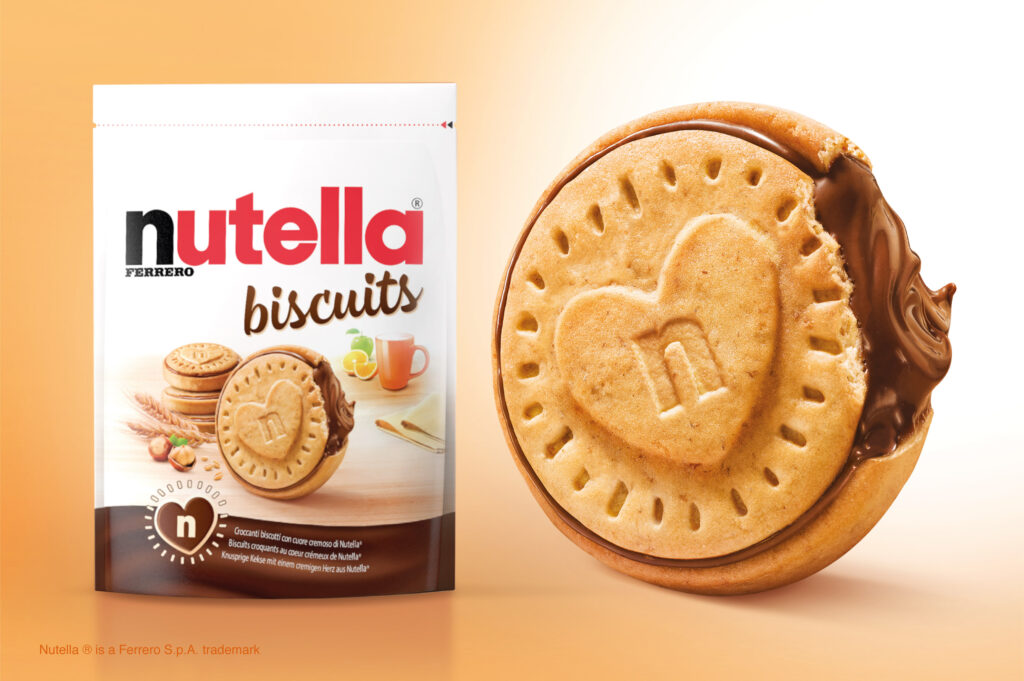
When Nutella, an iconic brand mainly focused and almost owning the spreads category, stretched into biscuits in 2019, the new product was welcomed with so much enthusiasm that it went out of stock shortly after launch. While some consumers enjoy biscuits with spreads on top, the launch of the Nutella-filled biscuit brought convenience alongside the unique distinctive taste of Nutella straight into the biscuits category. Consumers were so eager to try the product that retailers were forced to cap the number of packs that a single customer could purchase.
Reese’s Puffs cereals
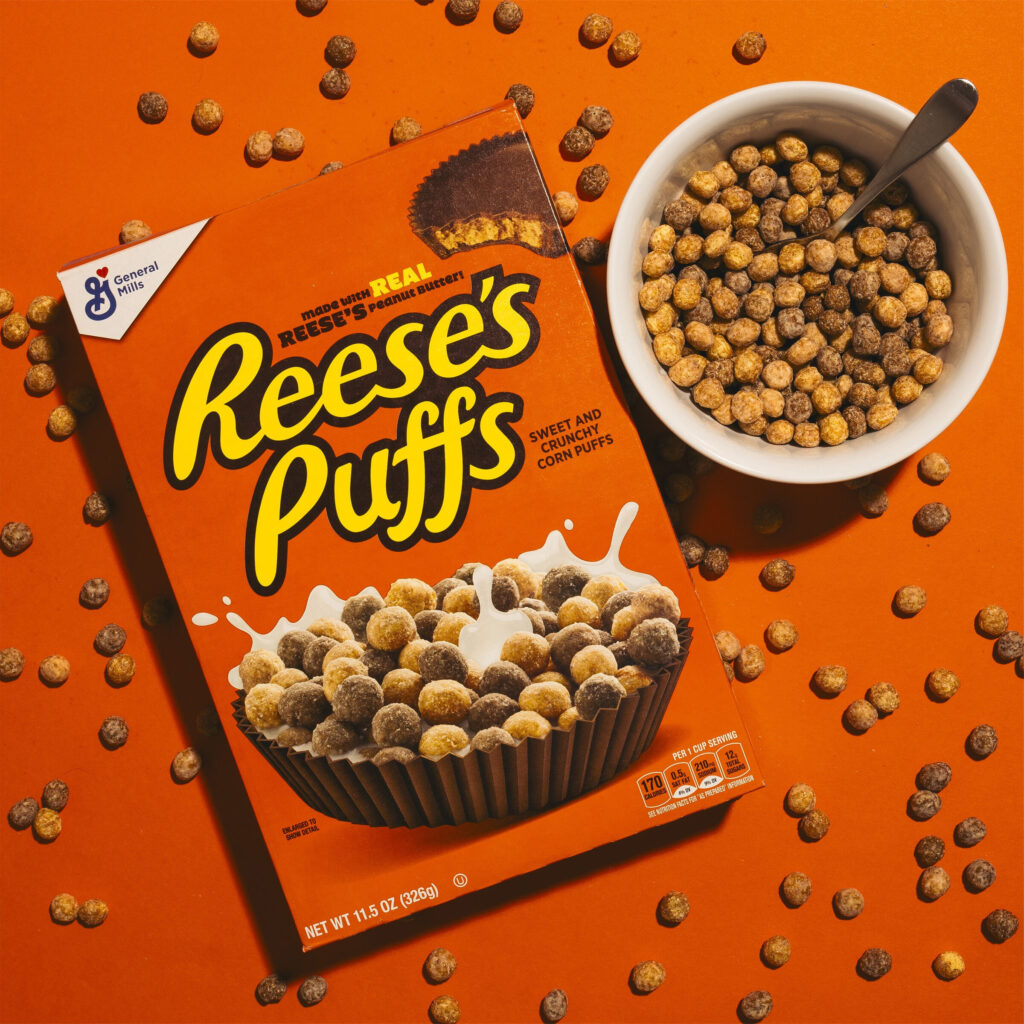
Reese’s Peanut Butter Cups entered the cereal market with Reese’s Puffs in 1994. By 2020, over 6 million loyal customers eat 1 to 4 servings of Reese’s Puffs per week according to Statista.
Mars ice-creams
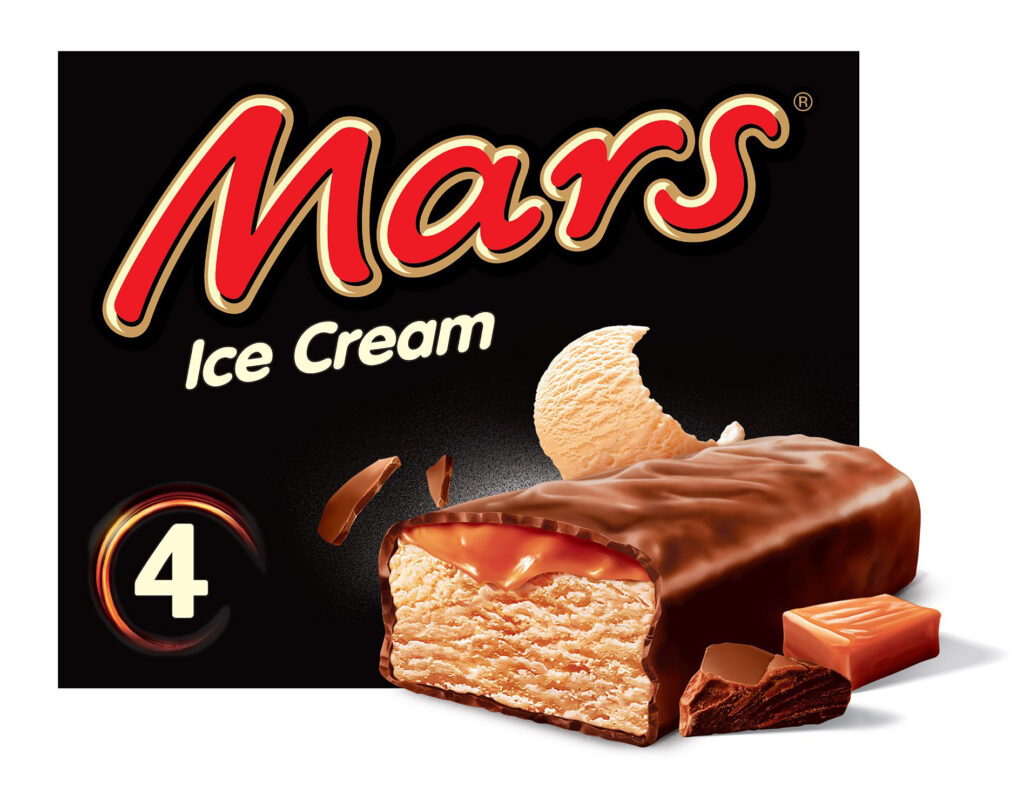
The company first entered the ice cream space in 1986 when Mars bought Dove Bar. Today, it has a wide offer across most of its confectionary brands and an ambition to reach $1.1 billion in sales globally by 2024.
Dove
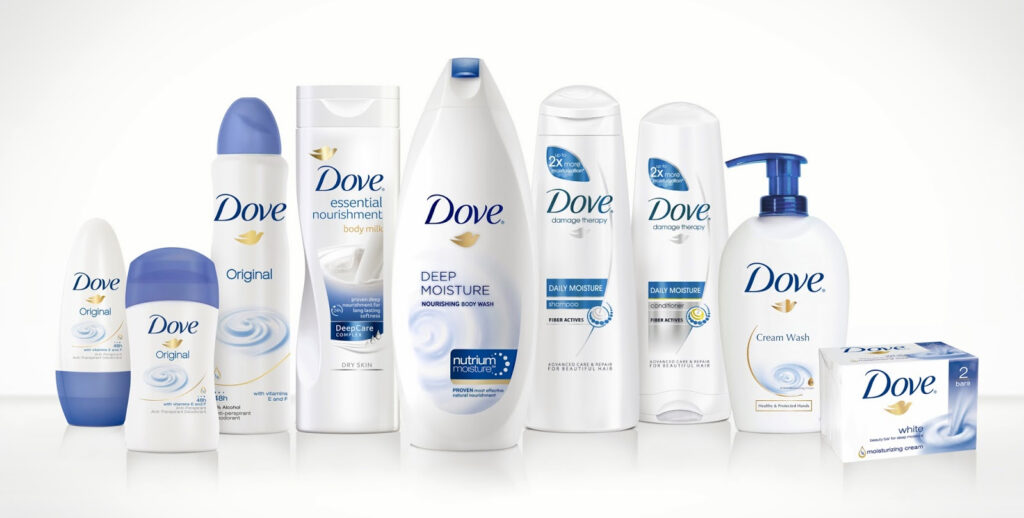
While Dove is often called out as one of the most successful and inspirational example of brand purpose within CPG, also its extension brand strategy has been instrumental in fuelling its sales growth and brand power. Launched as a bar soap brand in 1955 and known for its moisturizing quality, the brand grew from 200 million dollars sales in the early 1990s into a 6.5 billion dollar brand in 2023 which includes hair care, deodorant, and more. Dove has carried the moisturizing power of its soap into almost every personal care segment it has stretched to, while equipping women with a wide range of products to nurture their real, authentic beauty.
Why does powerbranding matter?
In recent years, CPG brands have faced challenges like never before when it comes to brand-building. From the emergence of direct-to-consumer (DTC) models and new ecommerce models, to the rise of private labels, the strain on supply chains worldwide, and geopolitical turbulence, the playing field has shifted dramatically. These pressures have made it difficult for many brands to meet both top-line and bottom-line targets. While short-term fixes, such as price hikes, provided temporary relief, they often fall short in delivering sustainable growth that best leverage the power of branding.
Now, with traditional growth tactics reaching their limits, many CPG brands are turning to longer term strategies to build a strong brand. This is where powerbranding can come into play. By expanding into new categories, brands can open fresh avenues for growth, driving both revenue, volume and profit. Crucially, powerbranding offers not only immediate returns but also long-term potential, allowing brands to maintain higher volumes over time while strengthening their position in the market.
When executed effectively, powerbranding drives growth for both the top and bottom lines. On the top line, it opens new avenues for expansion and market penetration. On the bottom line, it enhances efficiencies by leveraging synergies, such as the media halo effect, which amplifies marketing efforts across categories. In essence, powerbranding allows brands to extract more value from their existing assets while building greater scale and relevance in the market.
When to consider powerbranding
Deciding when to stretch a brand into a new category involves two critical considerations in your strategic planning. The first is opportunity, namely identifying attractive categories with strong growth potential and healthy profit margins. Expanding into the right category can provide a significant boost to both revenue and market presence. But chasing opportunities alone isn’t enough.
The second, and perhaps more important factor, is brand permission—does your brand have the credibility and equity to stretch into a new category without diluting its core identity? While many loyal customers enjoy seeing trusted brands offer products in new spaces, not all brands have the strength to pull off a successful stretch. Brands that overextend or stretch into areas that don’t align with their values risk eroding their equity, which can outweigh the benefits of short-term gains made with a novel customer experience.
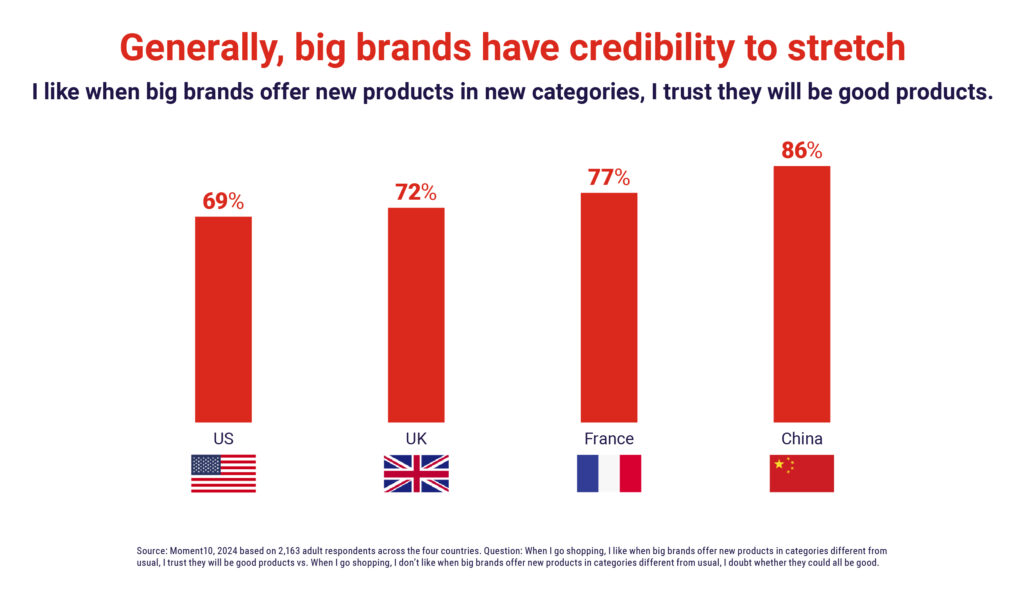
True powerbranding expands revenue while reinforcing the brand’s core equity, ensuring long-term value. So, the key question becomes: Is your brand strong enough to stretch in a way that enhances its equity, rather than undermining it? Here are some examples for consideration.
Nivea
Nivea was able to leverage powerbranding very effectively, starting from the original hand cream and then progressively stretching into new categories. Rather than diluting, this strategic move was executed on brand and actually reinforced its overall brand equity. At the same time, Nivea has progressively targeted higher margin categories and is now developing on their face care range.
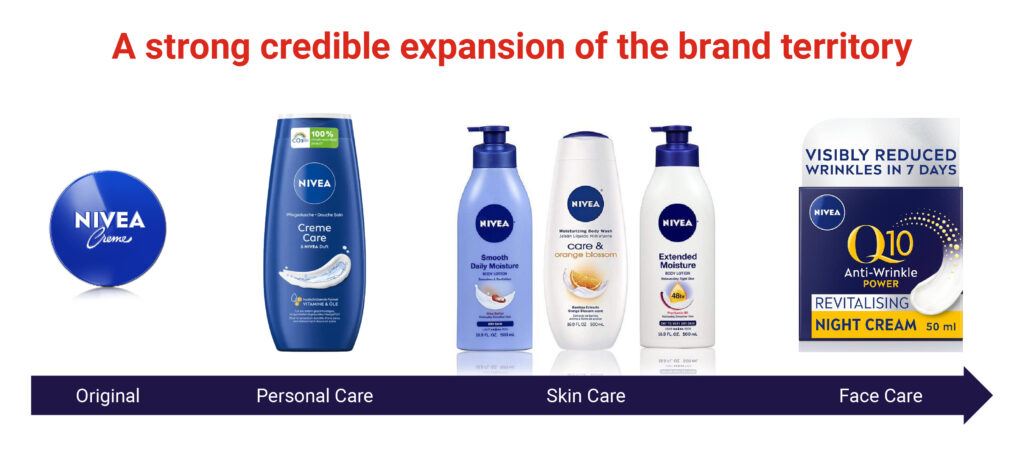
The brand now has a range of almost 100 different products, and in 2023 delivered its best performance of the century, surpassing the €5 billion sales threshold for the first time in its history with an organic growth of 16.2%. (2)
How to succeed with powerbranding
Success in powerbranding starts with one essential step: measuring the strength of your brand and its equity. Before you attempt to stretch into new categories, it’s crucial to assess whether your brand has the credibility and emotional connection with consumers to support such a move. Equally important is evaluating the target category’s attractiveness—both in terms of growth potential and profitability. You’ll want to look at whether the market is concentrated or fragmented, how crowded the space is, and where there might be opportunities for differentiation or white space that your brand can fill.
Once you’ve assessed these factors, the next step is identifying the stretching driver suitable for your brand positioning—the unique element that enables your brand to succeed in a new category. This could be a tangible feature, like a signature taste or recipe (for example, Oreo’s distinctive flavor and shape), or an intangible asset, such as a brand’s core values or identity (as seen with Dove’s “Real Beauty” campaign). Stretching drivers often evolve over time, combining distinctive tangible product features with emotional beliefs that connect deeply with consumers. Take Dove, which originally expanded based on its moisturizing properties before adding a more powerful emotional driver around body positivity and self-esteem.
The final key is ensuring that this stretching driver can create meaningful differentiation in the new category, namely by creating additional value in the category. It’s not enough to just enter a new space—you need to stand out. Equally important is executing your brand’s identity consistently in the new category to maintain authentic connections with your target audience, and maintain brand loyalty through consumer trust.
Actions for brand owners to leverage powerbranding
Setting up a brand management methodology to leverage powerbranding can be considered through four key actions:
1. Assess Brand Equity: Is your brand strong enough to stretch into new categories?
2. Identify the Stretching Driver: What unique element will drive success across categories?
3. Evaluate Market Attractiveness: Are there untapped opportunities for growth in the new category?
4. Plan the Execution: How will your brand’s essence translate in this new market?
